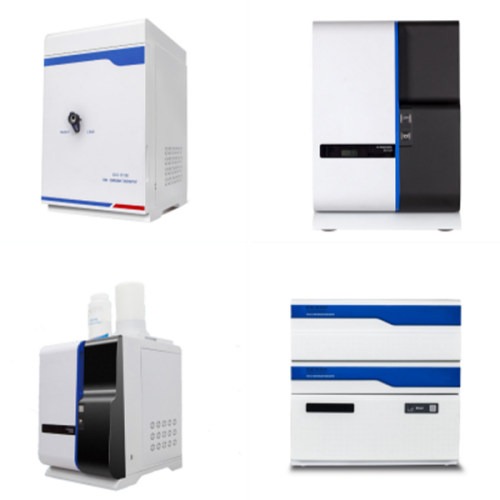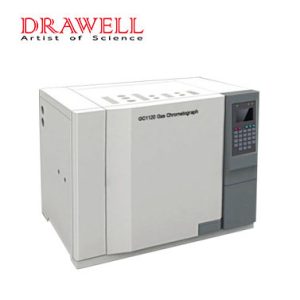Ion Chromatography is a type of high-performance liquid chromatography (HPLC), which is a liquid chromatography method for analyzing anions and cations. Like HPLCIC exploits the inherent affinity of ion pairs for the “eluent” (usually buffered water) and the “stationary phase” (porous solid support with charged functional groups).
In a narrow sense, ion chromatography is a chromatographic method in which ion exchange resin with low exchange capacity is used as a fixed relative ionic substance to separate, and a conductivity detector is used to continuously detect the conductance change of the effluent. The definition of ion chromatography in “Principle and Application of Ion Chromatography” is a liquid chromatography method that uses the ionicity of the tested substance to separate and detect.

Essentially, a pump is used to provide a continuous flow of solvent into which the dissolved sample is introduced. After the sample enters the solvent stream, it will pass through the analytical column. The ions present in the sample mixture are then separated according to their affinity for the column. After the components in the sample are separated, they pass through a conductivity detector. The target ion’s detector response and “retention time” (the time it takes for a compound to travel from the injector to the detector) can then be compared to the reference material. Conductivity detectors can detect organic and/or inorganic ions (positive or negative).
Applications of Ion Chromatography
Detection of Inorganic Anions
Inorganic anions are the earliest and most mature ion chromatography detection methods, including fluorine, chlorine, bromine, and other halogen anions, sulfate, thiosulfate, cyanide, and other anions in aqueous samples, which can be widely used in drinking water. Water quality testing, beer, beverage, and other food safety, wastewater discharge compliance testing, metallurgical process water samples, oil industry samples, and other industrial products quality control. Especially because the residues of halogen ions in the electronics industry are increasingly restricted, ion chromatography is widely used in important process control departments such as halogen-free analysis.
Inorganic anion exchange columns usually use cross-linked resins with quaternary amine functional groups or other substances with similar properties. Common anion exchange columns such as Metrosep A Supp 4-150, A Supp 5-250, etc. The commonly used eluent is a dilute solution of Na2CO3 and NaHCO3 in a certain proportion. By changing the composition ratio and concentration of the eluent, the retention time and peak sequence of different anions can be controlled.
Detection of inorganic cations
The detection of inorganic cations is similar to the detection of anions, the difference is that a sulfonic acid-based cation exchange column is used, such as Metrosep C1, C2-150, etc. The commonly used eluent system such as the tartaric acid/lutidine system can be Effectively analyzed Li, Na, NH4+, K, Ca, Mg plasma in aqueous samples.
Organic Anion and Cation Analysis
With the development of ion chromatography technology, new analytical equipment and separation methods have emerged and gradually developed to analyze some complexions in biological samples. The more mature applications include:
1) Detection of biogenic amines
Metrosep C1 separation column; 2.5mM nitric acid/10% acetone eluent; 3 µ L injection, which can effectively analyze putrescine, histamine, cadaverine, and other components, and has become an important detection method for criminal investigation systems and forensics.
2) Detection of organic acids
Metrosep Organic Acids Separation Column, MSM Suppressor; 0.5 mM H2SO4 as eluent for effective analysis including lactic acid, formic acid, acetic acid, propionic acid, butyric acid, isobutyric acid, valeric acid, isovaleric acid, malic acid, citric acid It is a simple and effective separation method in the microbial fermentation industry and the food industry.
3) Carbohydrate analysis
A variety of sugar analysis methods have been developed, including glucose, lactose, xylose, arabinose, sucrose, and other sugar analysis methods. It is especially widely used in the food industry.
Advantages of Ion Chromatography
fast and convenient
The average analysis time for 7 common anions (F-, Cl-, Br-, NO2-, NO3-, SO42-, PO43-) and 6 common cations (Li+, Na+, NH4+, K+, Mg2+, Ca2+) has been respectively less than 8min. The 7 most important common anions above can be separated to the baseline in only 3 minutes with a high-efficiency rapid separation column.
high sensitivity
The concentration range of ion chromatography analysis is from low μg/L (1-10 μg/L) to hundreds of mg/L. Direct injection (25μL), conductivity detection, the detection limit for common anions are less than 10μg/L.
good choice
The selectivity of the IC method for analyzing inorganic and organic anions and cations can be achieved by choosing appropriate separation methods, separation columns, and monitoring methods. The effect of immobilization relative selectivity is greater in IC compared to HPLC.
Simultaneous analysis of multiple ionic compounds
Compared with photometric methods and atomic absorption methods, the main advantage of IC is that it can detect multiple components in the sample at the same time. Complete information on anions, cations, and sample composition is available in a fraction of the time.
Separation column with good stability and high capacity
Unlike silica gel packings used in HPLC, the high pH stability of IC column packings allows the use of strong acids or bases as eluents, which is beneficial for expanding the range of applications.
In conclusion, ion chromatography is a very good detection device, and the selectivity of ion chromatography is higher than that of other chromatographs. Therefore, as laboratory testing equipment, it is a very good choice. If you need ion chromatography like this to enrich your laboratory, please contact us. We are NEON and we only do the best ion chromatography.



